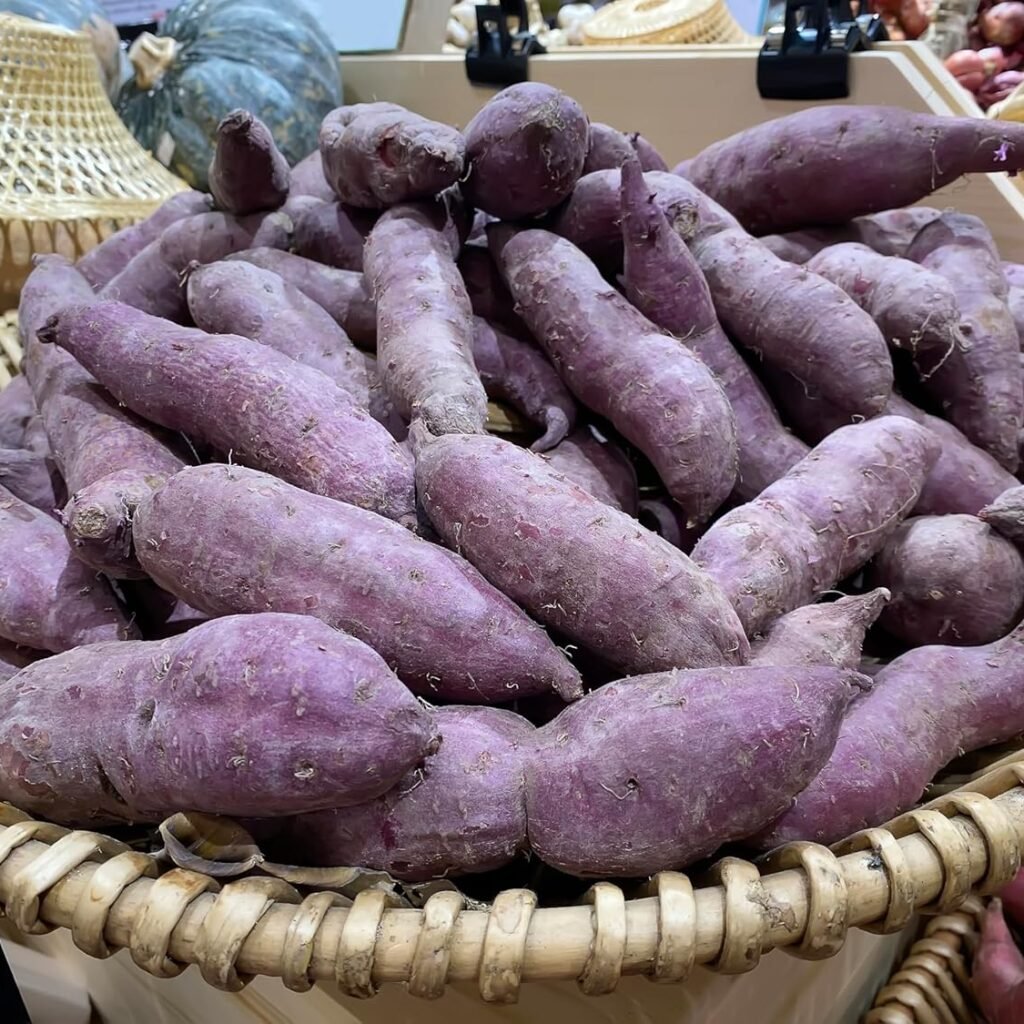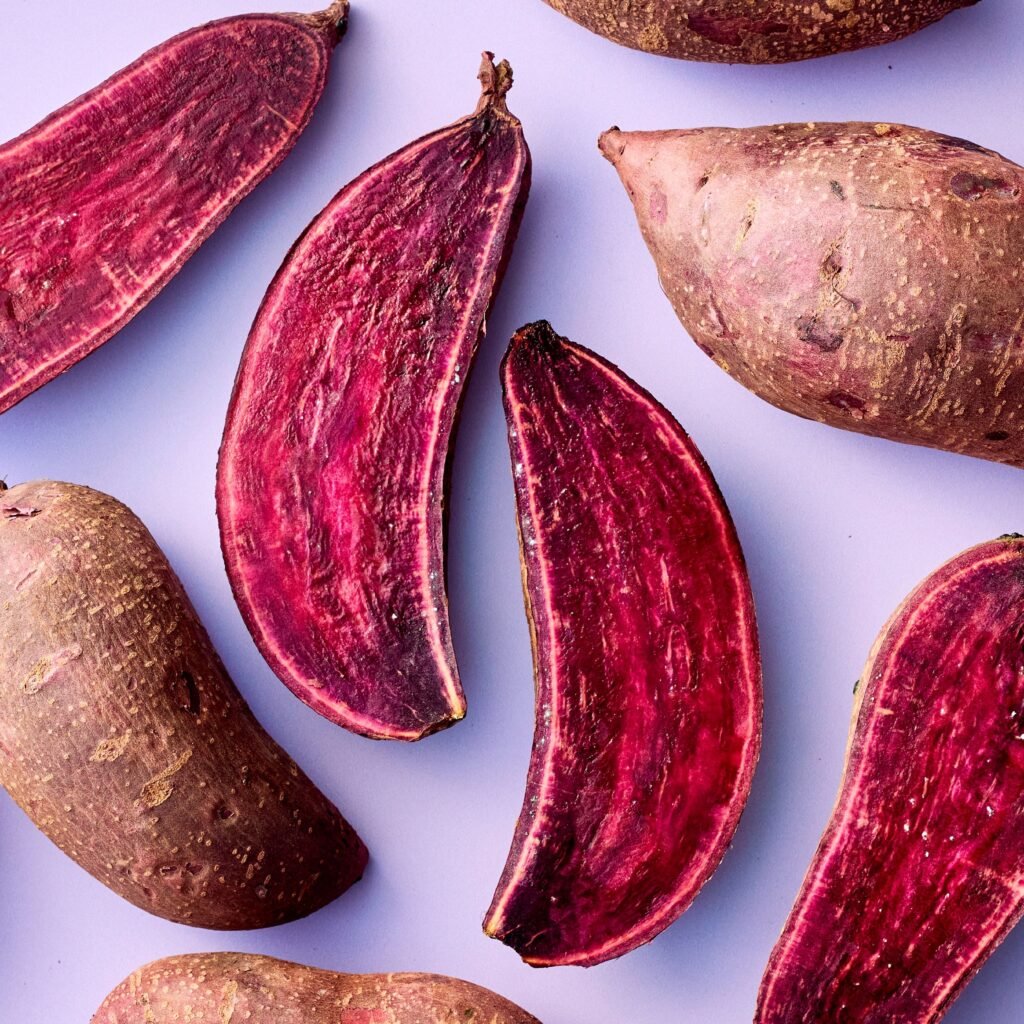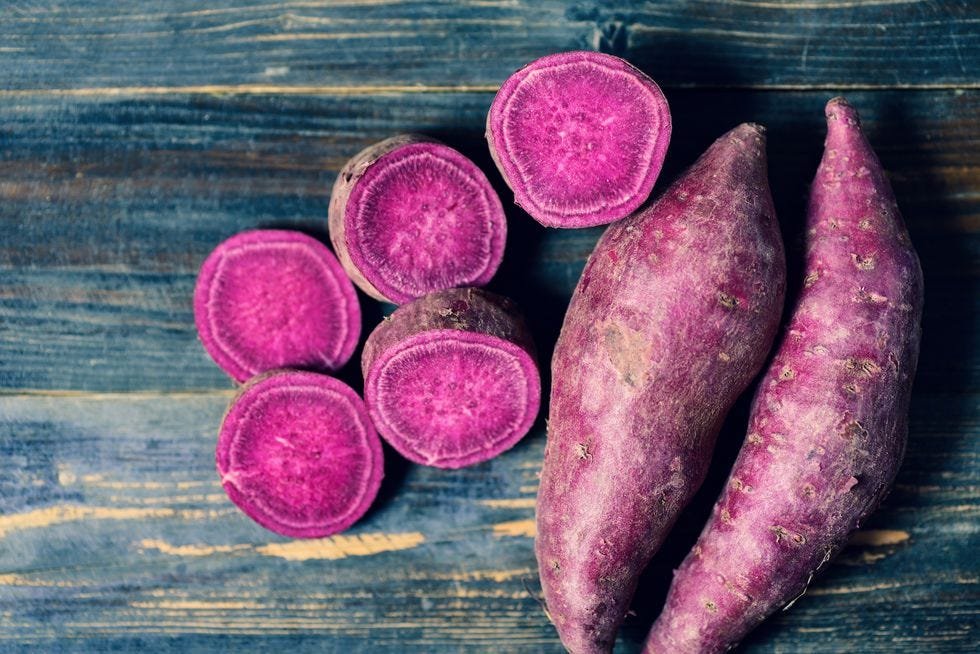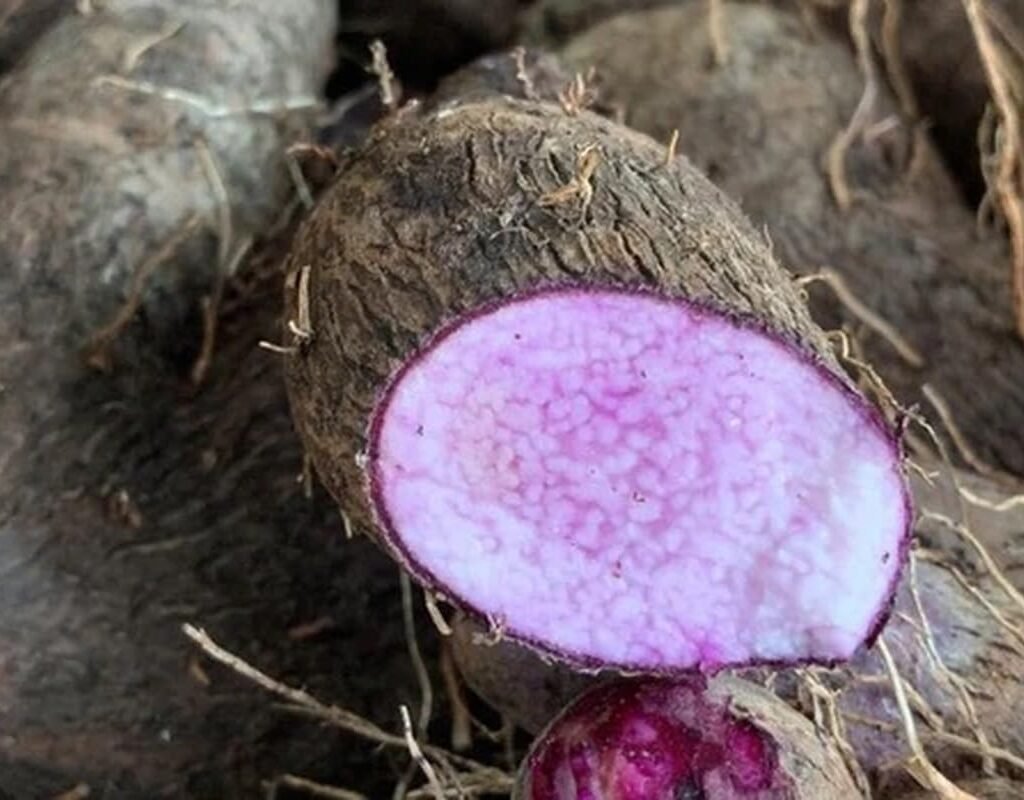If you’ve scrolled through Instagram lately, you’ve likely spotted that dreamy lavender hue glowing from ice creams, doughnuts, lattes, and cheesecakes. That stunning color isn’t food dye — it’s ube, also known as purple yam, a naturally violet tuber that’s become one of the most sought-after ingredients in the American dessert world.
Originating from the Philippines, ube (pronounced “OO-beh”) has exploded in popularity across the U.S., thanks to its irresistible mix of vibrant looks, subtly sweet flavor, and nutritional benefits. Once a traditional ingredient in Filipino kitchens, it’s now the star of plant-based recipes, health-focused desserts, and trendy café menus nationwide.
In this guide, we’ll explore everything you need to know about ube — from its cultural roots to its health perks and modern uses in American kitchens.
What Is Ube (Purple Yam)?

Ube is a starchy root vegetable belonging to the yam family (Dioscorea alata). Despite its striking purple flesh, ube looks rather unassuming on the outside — rough, brown, and potato-like. But slice it open, and you’ll discover a vivid violet interior that gives every dish a visually stunning twist.
While it’s sometimes confused with taro or purple sweet potatoes, ube stands apart for its naturally sweet, vanilla-like flavor and denser, creamier texture when cooked.
In Filipino cuisine, ube has been cherished for generations — especially during festive occasions — appearing in beloved desserts like ube halaya (purple yam jam), ube ice cream, and halo-halo, a layered cold dessert that celebrates tropical flavors.
The Nutritional Powerhouse Behind the Purple

Beyond its visual appeal, ube is a nutrient-dense food that fits perfectly into today’s wellness-driven diets. Here’s what makes it such a smart choice:
| Nutrient (per 100g cooked ube) | Amount |
|---|---|
| Calories | ~120 |
| Carbohydrates | 27g |
| Fiber | 4g |
| Protein | 1.5g |
| Vitamin C | 12% DV |
| Potassium | 440mg |
| Manganese | 15% DV |
Rich in Antioxidants
The purple hue of ube comes from anthocyanins, the same antioxidants found in blueberries and black rice. These compounds help fight free radicals, reduce inflammation, and may support heart and brain health.
Supports Digestive Wellness
Ube is high in dietary fiber, which promotes healthy digestion, prevents constipation, and stabilizes blood sugar levels — making it an excellent carbohydrate choice for people managing diabetes.
Boosts Energy Naturally
Packed with complex carbs, ube provides sustained energy without the crash associated with refined sugars. It’s ideal for athletes, busy professionals, or anyone seeking a slow-release energy source.
Good for Heart and Skin Health
The combination of potassium, vitamin C, and antioxidants in ube supports cardiovascular function, collagen production, and radiant skin — a trio of benefits perfect for the health-conscious generation.
Ube vs. Taro vs. Purple Sweet Potato: What’s the Difference?

It’s easy to confuse these purple-hued roots, but they each have unique characteristics:
| Feature | Ube (Purple Yam) | Taro | Purple Sweet Potato |
|---|---|---|---|
| Origin | Philippines | Southeast Asia | Japan, U.S. |
| Color | Deep violet | Pale lavender or gray | Bright magenta |
| Flavor | Sweet, nutty, vanilla-like | Earthy, nutty | Sweet, dense |
| Texture | Creamy and smooth | Sticky and starchy | Fluffy and dry |
| Uses | Desserts, jams, ice cream | Savory soups, boba teas | Fries, baked goods |
In short, ube shines in sweet recipes, while taro and purple sweet potatoes are more versatile in savory or baked dishes.
Cultural Roots: From Filipino Kitchens to American Cafés
For Filipinos, ube is more than food — it’s a symbol of celebration and cultural pride. Dishes like ube halaya, a jam made from boiled and mashed purple yam mixed with condensed milk and butter, have been part of Filipino family gatherings for generations.
As Filipino-Americans brought their culinary traditions to the U.S., ube began appearing in bakeries and dessert shops. Social media did the rest — with its mesmerizing color and rich flavor, ube quickly went viral, captivating foodies and health enthusiasts alike.
Today, you’ll find ube lattes in Los Angeles, ube mochi doughnuts in New York, and ube cheesecakes in Seattle — a true testament to how global flavors continue to shape America’s food culture.
How to Cook and Use Ube

1. Boil and Mash
Fresh ube can be boiled, peeled, and mashed — similar to how you’d prepare potatoes. Once mashed, it becomes the perfect base for desserts, spreads, and even smoothies.
2. Ube Halaya (Purple Yam Jam)
This classic Filipino recipe involves simmering boiled ube with butter, condensed milk, and coconut milk until thick and silky. The result is a luscious, purple jam that can be eaten on its own or used as a filling for pastries and cakes.
3. Ube Ice Cream
Made with ube halaya or powder, coconut milk, and cream, this ice cream is a velvety blend of sweetness and nostalgia. Its pastel purple hue makes it both Instagram-worthy and irresistible.
4. Ube Latte or Smoothie
Blend ube powder or halaya with almond milk, honey, and ice for a nutritious, caffeine-free drink that rivals matcha in both taste and aesthetics.
5. Baking with Ube
Add ube flavoring or puree to your batter for a fun twist on muffins, cookies, or pancakes. Ube pairs beautifully with vanilla, coconut, and white chocolate.
6. Ube Pancakes and Waffles
For a colorful breakfast, mix ube extract or powder into your pancake or waffle batter — your brunch guests will love the vibrant surprise!
Where to Buy Ube in the U.S.

Thanks to growing demand, ube products are widely available across America. You can find:
- Fresh ube at Asian grocery stores or farmers’ markets.
- Frozen grated ube in the freezer section of Filipino supermarkets.
- Ube powder or ube extract online (from Amazon, Weee!, or Asian specialty brands).
- Ube jam (halaya) pre-made in jars for easy dessert-making.
Pro tip: If you can’t find real ube, purple sweet potato can serve as a great substitute for most recipes, though it’s less creamy and slightly sweeter.
Modern American Recipes Featuring Ube
1. Ube Cheesecake Bars
A blend of cream cheese, ube halaya, and graham cracker crust — these bars strike the perfect balance between traditional Filipino and classic American flavors.
2. Ube Milk Tea
Swap taro for ube in your next bubble tea order. Its floral sweetness and creamy texture make for an unforgettable drink.
3. Ube Doughnuts
A hit in boutique bakeries, these doughnuts use ube glaze for a vibrant twist that’s hard to resist.
4. Ube Cupcakes
Top moist ube cupcakes with coconut frosting or cream cheese icing for a crowd-pleasing dessert that looks as good as it tastes.
Health-Conscious Ube Hacks
- Use coconut milk instead of condensed milk for vegan-friendly desserts.
- Replace refined sugar with honey, maple syrup, or monk fruit sweetener.
- Add protein powder to ube smoothies or pancakes for a nutritious, post-workout treat.
These adjustments maintain the essence of ube’s traditional flavor while fitting perfectly into modern American wellness trends.
Fun Facts About Ube
- Ube has been cultivated in the Philippines for over 400 years.
- Its deep purple color was once used as a natural food dye.
- In Filipino folklore, ube is often linked to love and gratitude, as it’s a dish prepared during family gatherings and festivals.
- In 2020, “ube desserts” were among the top five most-searched food trends on Google in the U.S.
Conclusion: Ube — A Sweet Fusion of Culture, Color, and Nutrition
From humble beginnings in Filipino kitchens to the menus of America’s most stylish cafés, ube has carved out a delicious new identity as a symbol of both tradition and innovation.
Its stunning purple color might draw you in, but its nutrient-rich composition, natural sweetness, and versatility are what make it truly special. Whether you’re enjoying it as ice cream, in a smoothie, or baked into a cake, ube offers a wholesome way to satisfy your sweet tooth — without the guilt.
So, the next time you spot a lavender-hued dessert at your favorite bakery, take a bite. You’re tasting the magic of a global superfood that’s redefining the meaning of sweet indulgence in America.






Leave A Comment